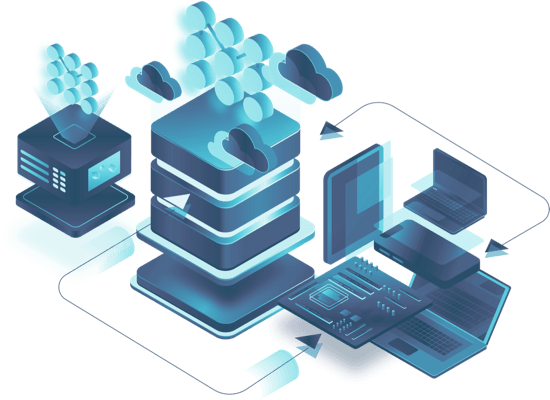In embedded Linux development, engineers face two primary approaches for operating system selection. One approach is custom distribution building, utilizing tools such as Yocto or Buildroot to create tailored system images optimized for specific hardware and application requirements. Alternatively, binary distributions offer pre-compiled packages and system images, with Debian and its derivatives serving as popular foundations for rapid prototyping and development.
The Raspberry Pi Foundation provides a Debian-based binary Linux distribution optimized explicitly for Raspberry Pi hardware variants. This approach proves particularly suitable for development teams working on small-scale IoT projects, where the Raspberry Pi 4 serves as a cost-effective platform for initial system integration and OTA update implementation testing.
OTA update methodologies
Throughout the product development lifecycle, embedded systems require software updates to address security vulnerabilities, implement bug fixes, and deploy feature enhancements. OTA update mechanisms enable remote software deployment across distributed device fleets without requiring physical access to individual units.
System-level updates
System updates target low-level components, including the bootloader, kernel, and root filesystem partitions. This approach updates the entire operating system partition, encompassing all software components regardless of whether individual files are modified.
The technical implementation typically employs dual partition schemes where the inactive partition receives the update while the active partition continues normal operation. Upon successful update verification, the system switches to the updated partition, providing inherent rollback capability if the new software fails to function correctly.
Advantages:
- Atomic update operations ensure a consistent system state
- Built-in redundancy prevents device failure during the update process
- Simplifies dependency management across the software stack
- Guaranteed rollback capability maintains system availability
Technical Limitations:
- Increased storage requirements for dual partition implementation
- Higher bandwidth utilization for complete partition transfers
- Extended update duration for large system images (typically hundreds of megabytes)
- Cellular data cost implications for bandwidth-constrained deployments
Application-level updates
Application updates target specific software components within the existing system framework. This granular approach updates individual packages, configuration files, container images, or application binaries without modifying the underlying operating system infrastructure.
The technical implementation leverages package management systems or container orchestration platforms to deploy incremental changes to targeted software components. Update size correlates directly with the scope of modifications, enabling efficient bandwidth utilization for minor software changes.
Advantages:
- Minimal bandwidth requirements for incremental updates
- Reduced update duration for targeted modifications
- Lower cellular data costs for bandwidth-constrained environments
- Support for frequent update cycles
Technical Limitations:
- Increased risk of system inconsistency during failed updates
- Complex dependency management across software stack versions
- Potential for version drift across the device fleet over time
- Limited rollback capability compared to system-level approaches
Implementation considerations
The selection between system-level and application-level update strategies depends on specific deployment requirements, network infrastructure constraints, and acceptable risk tolerance for each embedded system implementation.
Critical factors include:
- Available storage capacity for dual partition schemes
- Network bandwidth limitations and associated costs
- Required update frequency and typical modification scope
- Acceptable downtime tolerance during update operations
- Regulatory compliance requirements for system integrity
Technical implementation framework
Modern OTA update frameworks provide client-server architectures supporting both update methodologies. The client component integrates with the target operating system to manage update acquisition, verification, and installation processes. Server-side components handle update package generation, distribution management, and device fleet monitoring.
Integration approaches vary based on the chosen Linux distribution and hardware platform. For Raspberry Pi implementations, client integration typically occurs at the system image level, with support extending across Raspberry Pi 3 Model B, B+, and Raspberry Pi 4 Model B variants.
The implementation workflow encompasses device preparation, server configuration, update package creation, and deployment management through secure communication channels with cryptographic verification of update integrity.
Advanced device management capabilities
Beyond OTA software updates, a comprehensive device management infrastructures provides additional capabilities, including remote terminal access, device monitoring, and configuration management. These features enable expanded fleet management functionality, sometimes necessary for fleet-wide OTA updates and more.
Open-core implementations of advanced features support customization and integration with existing development workflows, providing scalable solutions for diverse embedded system deployments.
Using Mender for OTA updates with Raspberry Pi
Selecting the right OTA update strategy for your Raspberry Pi deployment requires balancing reliability, bandwidth efficiency, and implementation complexity. System-level updates offer maximum reliability and simplified rollback capabilities, making them ideal for mission-critical applications where consistency is nonnegotiable. Application-level updates provide bandwidth optimization and cost efficiency, which are particularly valuable for large-scale deployments with frequent update cycles.
The key to successful OTA implementation lies in understanding your specific constraints: available storage capacity, network bandwidth limitations, update frequency requirements, and acceptable risk tolerance. Each approach presents distinct advantages, and the optimal choice depends on your deployment's unique operational requirements.
Get started: Quickly deploy an over-the-air updates for Raspberry Pi with Mender
While Mender supports a wide range of devices and distributions, Raspberry Pi offers an excellent starting point for evaluating OTA update capabilities. Mender delivers comprehensive support for both system-level and application-level updates, ensuring you can implement the strategy that best fits your deployment needs.
Our comprehensive documentation walks you through device setup and deployment workflows, enabling you to implement secure OTA updates with atomic operations and automatic rollback protection. Whether you prioritize the reliability of full system updates or the efficiency of targeted application updates, Mender's flexible architecture accommodates both approaches seamlessly.
Experience hassle-free OTA deployment with Mender's managed cloud infrastructure through our guided setup process. Extend your device management capabilities beyond software updates with integrated features like remote terminal access and comprehensive fleet monitoring. Many advanced capabilities are available through our open-source offerings, giving you the flexibility to scale and customize your device management solution as your requirements evolve.
Recent articles
The struggle to reach global markets for medical device manufacturers: The importance of international compliance
The differences between the US FDA’s device approval process and the EU’s medical device regulation (MDR): An essential dual-compliance framework for global manufacturers
Why OTA updates are now mission critical for future-proofed device lifecycle management
Learn why leading companies choose Mender
Discover how Mender empowers both you and your customers with secure and reliable over-the-air updates for IoT devices. Focus on your product, and benefit from specialized OTA expertise and best practices.



